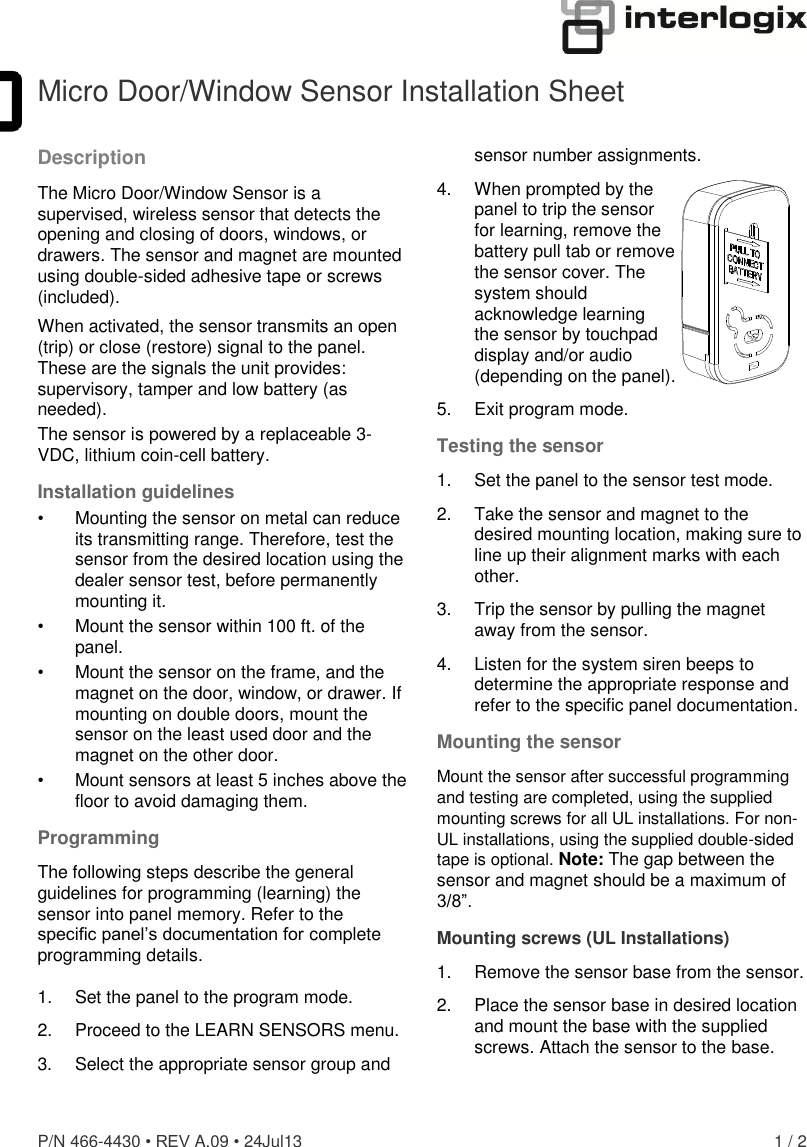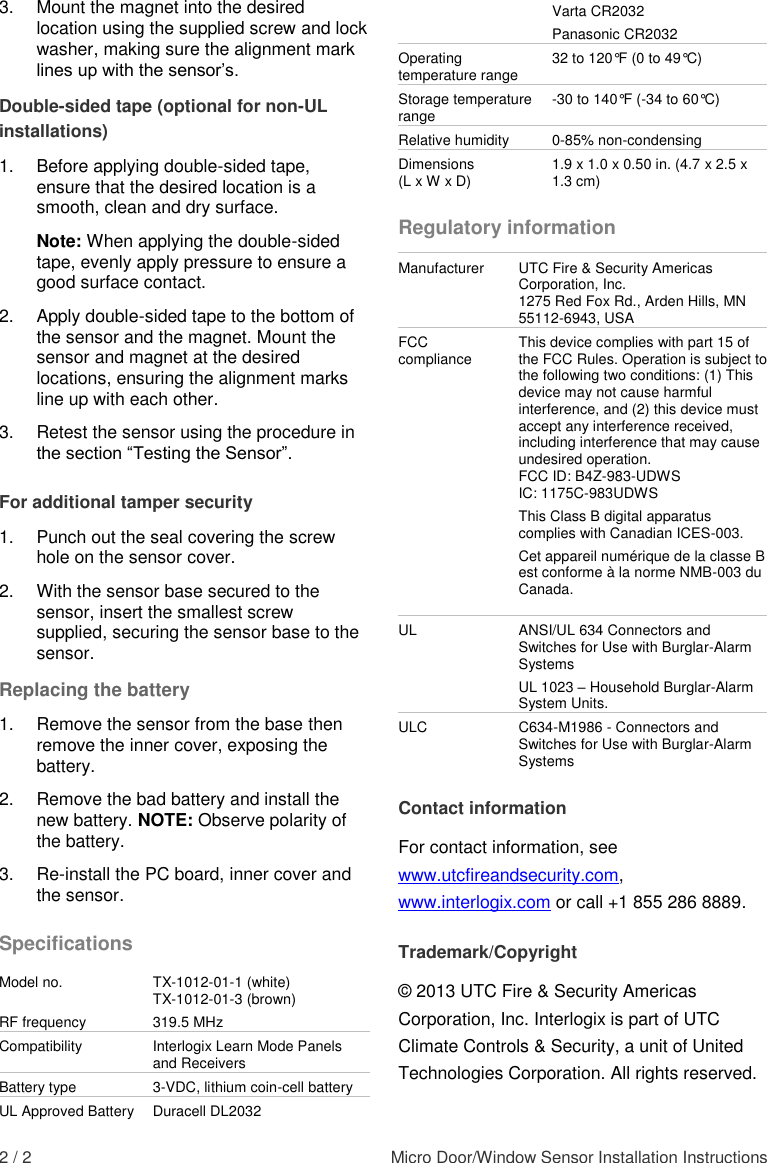UTC Fire and Security Americas 983-UDWS Wireless Door-Window Sensor User Manual Micro Door Window Sensor Installation Instructions
UTC Fire & Security Americas Corporation, Inc. Wireless Door-Window Sensor Micro Door Window Sensor Installation Instructions
User Manual

